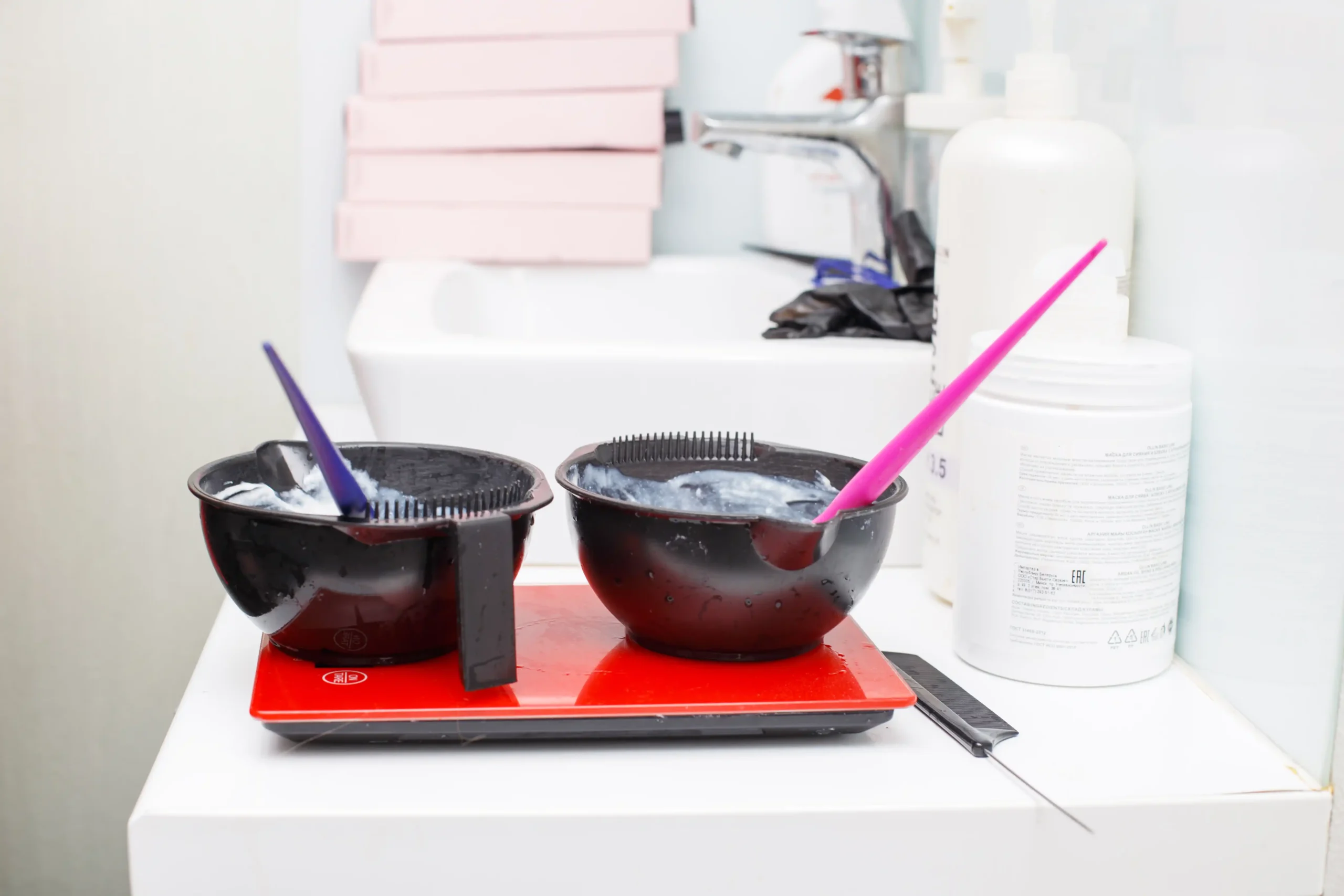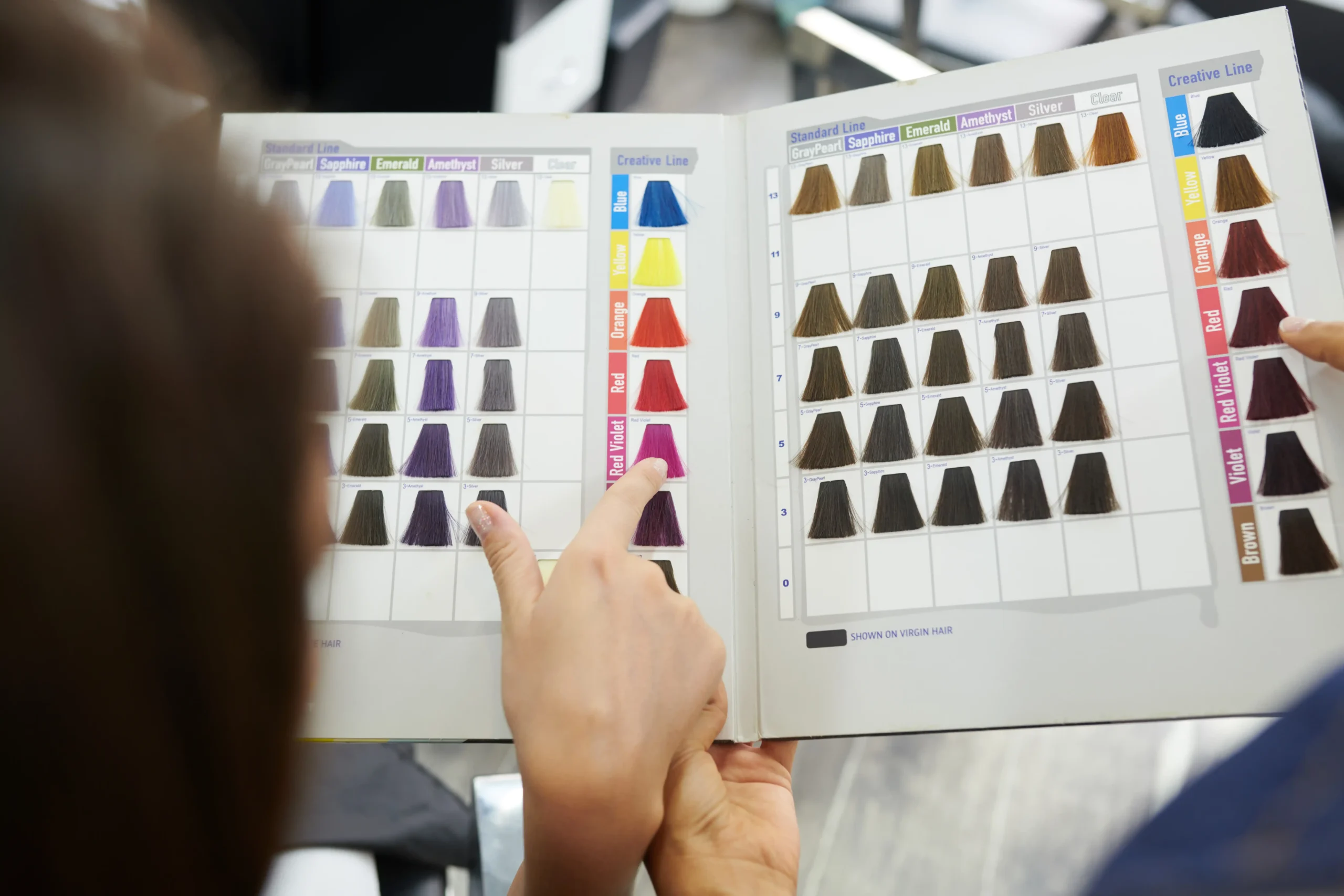Introduction to the carbon footprint in a hair salon
Reducing one's carbon footprint has become a necessity for many businesses, including hair salons. A hair salon, however small, can have a significant impact on the environment. Understanding and addressing this issue is the first step in becoming more sustainable and eco-responsible. In this first part, we'll explore what a carbon footprint is and the impact of the hairdressing industry on the environment.
Understanding a carbon footprint
A carbon footprint measures the total quantity of greenhouse gases (GHGs) emitted directly and indirectly by an activity or company. These emissions are mainly composed of carbon dioxide (CO2), but also include other gases such as methane (CH4) and nitrous oxide (N2O).
- Direct sources : Emissions from the combustion of fossil fuels such as natural gas used for heating, or electricity generated by non-renewable sources.
- Indirect sources : Emissions associated with the production of goods and services used, such as cosmetics and electrical appliances.
For a hair salon, this can include the energy used to run appliances, the chemicals in hair care products and even water consumption.
The hairdressing industry's impact on the environment
The hairdressing industry is surprisingly energy and resource-intensive, which can result in a significant carbon footprint. Here are some of the major environmental impacts:
- Energy consumption : Hairdryers, straightening irons and curling irons can consume a lot of electricity, especially when used intensively all day long.
- Chemical products : Many hair care products contain chemicals that are not only harmful to human health, but also to the environment when they end up in wastewater.
- Waste : Plastic packaging, single-use towels and other everyday supplies all contribute to waste production.
- Water consumption : A hair salon uses a significant amount of water to wash hair, which can be wasteful if measures are not taken to conserve this precious resource.
Awareness of these impacts is essential for any company seeking to reduce its carbon footprint and adopt more environmentally-friendly practices.
Energy solutions to reduce your carbon footprint
To reduce a hair salon's carbon footprint, energy-efficient solutions can play a crucial role. Switching to renewable energy sources and optimizing energy use are two key strategies to consider.
Switching to green energy
Use of renewable energy suppliers
Opting for a green energy supplier is a simple but effective solution. Many suppliers now offer electricity options from renewable sources such as wind and solar. This choice reduces emissions without requiring major changes to the day-to-day running of the salon.
Solar panel installation
To take things a step further, installing solar panels on the living room roof can be an excellent option. Although an initial investment, long-term costs are often reduced thanks to less dependence on traditional electricity grids and the possibility of benefiting from tax credits.
Optimizing energy use
Use of efficient electrical appliances
Replacing older appliances with newer, more energy-efficient models can also make a big difference. For example, Energy Star-certified hair dryers, straightening irons and other appliances consume less electricity.
Common energy-saving practices
- Switch off appliances: Ensure that all devices

Sustainable resource management
In addition to energy solutions, sustainable resource management plays a key role in reducing a salon's carbon footprint. This includes using eco-friendly beauty products and minimizing waste and water consumption.
Use of eco-friendly beauty products
Choice of products without harmful chemicals
Opting for eco-friendly beauty products is a great way to reduce the salon's environmental impact. Products containing natural and organic ingredients are not only better for the health of customers and employees, but also less polluting for the environment. Shampoos, colorants and other hair treatments without sulfates, parabens or other harsh chemicals can reduce the greenhouse gas emissions associated with their production and disposal.
Support for brands that adopt sustainable practices
Supporting beauty brands committed to sustainable practices is another important strategy. Many companies invest in recyclable packaging, eco-friendly manufacturing processes and carbon-offset initiatives. By choosing these brands, you're not only encouraging sustainable practices, but also sending a strong message to your customers about the importance of environmental responsibility.
Minimizing waste and water wastage
Recycling and composting
Waste management is crucial in a hair salon. Implementing a recycling program helps reduce the amount of waste sent to landfill. Recyclable materials can include paper, plastic, metals and even certain types of hair, which can be used in composting or the manufacture of earthquake pads. What's more, composting organic waste can contribute to the production of useful compost for agriculture and gardening, bringing the resource cycle full circle.
Water collection and reuse
Reducing water wastage is essential in a hair salon, where hair washing is a common activity. The use of water-saving devices, such as low-flow showerheads, can significantly reduce water consumption. What's more, water collection and reuse systems make it possible to recover wastewater for non-potable uses, such as floor cleaning. This practice not only saves water, but also reduces long-term operating costs.
In short, adopting eco-friendly products and improving resource management can significantly reduce a salon's carbon footprint. Not only do these practices minimize environmental impact, but they can also attract an ecologically conscious clientele, boosting your reputation and business success. These initiatives, combined with efficient energy use, form a holistic approach to making your salon more sustainable and environmentally friendly.
See also: Five natural decorating ideas for my hair salon?
Raising environmental awareness among employees and customers
In a hair salon, collective adherence to sustainable practices is crucial to reducing the carbon footprint. Raising employee and customer awareness of the importance of environmental sustainability can transform your salon into a model of ecological responsibility. This part of the article explores methods for educating your team and engaging your clientele on these issues.
Training employees in environmentally-friendly practices
Training sessions and workshops
Organizing regular training sessions for your employees can be a great way of instilling environmentally-friendly practices. These can include workshops on efficient energy use, water-saving tips and information on eco-friendly products. You can even invite sustainability experts to offer interactive sessions and practical demonstrations.
- Product training : Teach employees to select and use products without harmful chemicals.
- Working practices : Teach techniques to minimize waste, for example by using reusable towels instead of paper towels.
- Energy saving : Tips for switching off electrical appliances when not in use and optimizing heating and air conditioning.
Sustainability champions
It can be effective to designate certain employees as "sustainability champions" within your salon. These individuals will be responsible for overseeing environmental initiatives, training their colleagues and ensuring that sustainable practices are followed.
Encouraging customers to adopt environmentally-friendly practices
Communication and education
Engaging your customers in your sustainability efforts can be done through a variety of communication channels. Inform them of the environmentally-friendly practices your salon adopts through posters, brochures or discussions during the appointment. Explain the environmental benefits of your choices and encourage them to adopt similar practices at home.
- Make it clear: Place posters and educational brochures in visible areas of the salon, such as reception and styling stations.
- Engaging conversations : Encourage your hairdressers to briefly discuss the ecological benefits of the products they use or the practices they follow during appointments.
- Newsletter : Include articles on sustainability in regular newsletters sent to your customers.
Green promotions and incentives
Creating special promotions for customers who participate in sustainable initiatives can further motivate your customers. For example, offer a discount on eco-friendly products or free service for customers who bring in product packaging for recycling. What's more, organizing events such as workshops on hair care with natural products can attract an environmentally conscious clientele.
Creating a culture of sustainability in everyday life
Continuous improvement and feedback
Fostering a culture of sustainability requires ongoing commitment and efforts to constantly improve practices. To do this, set up a feedback system where employees and customers can submit suggestions or share ideas for making the salon even greener. Regular meetings to discuss environmental performance and plan improvements can also be beneficial.
- Suggestion box : Provide a suggestion box where employees and customers can put forward ideas for improving sustainability.
- Follow-up meetings : Hold regular meetings to assess progress and adjust strategies if necessary.
- Performance evaluation : Create key performance indicators (KPIs) to track the effectiveness of green initiatives.
Partnerships with environmental organizations

Adopting sustainable salon maintenance practices
To reduce your salon's carbon footprint, it's crucial to adopt sustainable practices in salon maintenance and daily management. This includes using eco-responsible materials, reducing waste generated by daily operations and improving the salon's energy efficiency.
Ecological materials and sustainable development
Choice of sustainable materials
Choosing sustainable building and decorating materials makes a significant contribution to reducing your carbon footprint. Opt for recycled or recyclable materials, paints without volatile organic compounds (VOCs) and wood furniture certified by eco-labels. These choices can not only reduce environmental impact but also improve indoor air quality.
Furnishings and fittings
Reorganizing your living room space to maximize the use of natural light can reduce the need for electric lighting. In addition, using LED lighting, which is more energy-efficient and long-lasting, also helps reduce energy consumption. Finally, considering green spaces, such as indoor plants, can improve air quality and bring a more natural, pleasant feel to your living room.
Waste reduction
Waste reduction practices
Implementing rigorous waste reduction practices is essential. Avoid single-use products and opt for reusable alternatives such as cloth napkins. Encouraging customers to switch to bulk products can also reduce plastic packaging. What's more, systematically sorting waste enables materials such as plastics, metals and paper to be recycled efficiently.
Upcycling and composting
Think of upcycling initiatives, where used objects are transformed into useful new products. For example, cut hair can be reused to make earthquake nets or as a raw material for certain textiles. Composting organic waste can also reduce the amount of garbage thrown away, while producing beneficial compost for local gardens.
Environmental certification programs
Ecological certification
Enrolling your salon in a green certification program can not only reinforce your commitment to sustainability, but also attract environmentally conscious customers. Certifications such as the European Ecolabel or B Corp certification guarantee that you meet strict criteria for sustainability, resource management and the reduction of greenhouse gas emissions.
Monitoring and assessment
Regular monitoring and evaluation of environmental performance are necessary to maintain and improve sustainable practices. Use tracking tools to measure your energy consumption, the amount of waste generated and recycled, and the use of eco-friendly products. This data can help identify areas for improvement and set new sustainability targets.
FAQ
What is a carbon footprint?
A carbon footprint measures the total quantity of greenhouse gases emitted directly and indirectly by an activity or company.
Why is it important to reduce my salon's carbon footprint?
Reducing your salon's carbon footprint is crucial to minimizing your environmental impact, attracting environmentally conscious customers and contributing to a sustainable future.
Which products are considered sustainable for a hair salon?
Sustainable products include those containing natural, organic ingredients, free from harmful chemicals such as sulfates and parabens, and packaged in recyclable materials.
What tax benefits can I get for greening my salon?
Some governments offer tax credits or subsidies for businesses that install energy-saving equipment, such as solar panels, or adopt sustainable practices.





